As I stated in What’s Cookin? we grocery shop once a month. It is probably worth nothing that this is not a pandemic specific lifestyle. Way back in July of 2018, I wrote a blog post about our family’s monthly shopping trips. These days I shop alone, and there are even more masks in the store- but not nearly as many princesses.

Monthly shopping isn’t for everyone. In fact, we are very aware of the privilege involved in being able to shop for our family by the month. However, it still seems to be the best system for us right now. To help accommodate the influx of food we do have a pantry area set up in the basement, a second refrigerator, and an absurdly large chest freezer. We fill and empty these things on a monthly basis. It is also worth noting that we do the majority of our shopping at a restaurant supply store. We source milk from a local dairy, coffee from a local roaster, and I often have a short list of items I can’t get or don’t want in bulk that I do get from the conventional grocery store-but most of our groceries come from this one shop. This helps us reduce waste and packaging.
There are as many approaches and reasons to monthly shopping as there are food choices in a grocery store. But I’m going to focus on what we do right now. Remember, we meal plan by the week, and we cook fresh meals every day. I’m not doing 1 day of shopping and 1 day of freezer cooking. This isn’t a ‘simplify your evening meals’ type system. This is simply how we are set up to feed our family of 6.
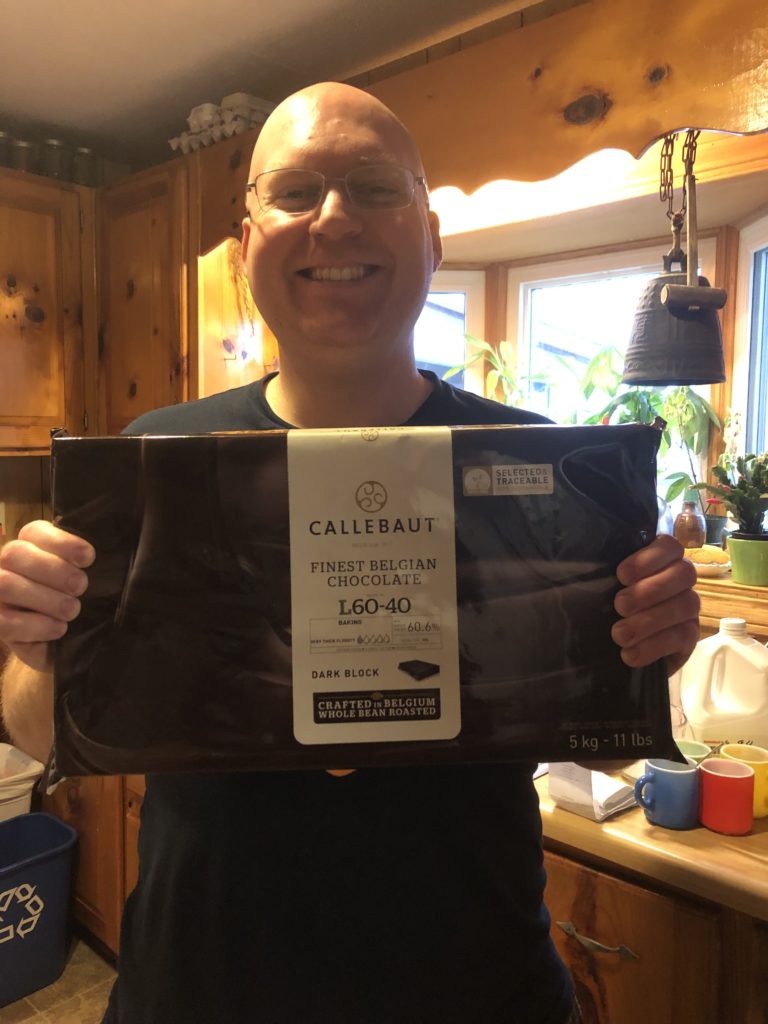
A few things about our food habits:
- Kevin loves good food- given the choice of any vacation destination, he’d take a good culinary experience over a good view every time.
- We buy & eat a limited number of prepared foods- tortellini (and now pierogies) cereal for our monthly cereal night, crackers, chips, and occasional granola bars for boating days pretty much sums it up.
- We aren’t all vegetarian – but meat is a “sometimes” food here. Served maybe once a month and that one time may be as simple a bacon on a breakfast sandwich. It is a meat-lite house.
- We eat a lot of food. I can’t overstate this- this is not to say that we over eat. I don’t think that we do. But we rarely snack, and everyone sits at the table 3xs a day. Additionally, at least currently there are no supplemental foods- no lunch at a friend’s house, no ‘well we can grab bagels and go to the park & the museum’. If it’s not in the house, it’s not being consumed.
- Lastly, we try very hard to minimize our food waste. We cook with whole ingredients, I save my veggie scraps to make soup broth, we compost the cooked scraps, we re-use egg shells for seed cups, and we compost coffee grounds and fruit peelings. **Side Note: If we can get someone to make the stickers on fruits & vegetables compostable that’d be great!**
Much to Kevin’s dismay- grocery day prep starts about a week before hand. This is all my fault. Although I have a list when I go to the store- I want to have it memorized before I go, so I’m not criss-crossing the store and I don’t forget anything. This is even more important during the pandemic when I don’t want to be inside the store longer than necessary. This means about a week before I plan to shop we start making lists at meal time. We begin by adding everyone’s favorite fresh items that they have been missing the last few days and ingredients people remember we are running low on from their turn in the kitchen. As it gets closer to shopping day we start going over our lists and checking inventories. We have a master shopping list-a spreadsheet that lists every item we would buy in a typical year. We literally go through the cabinets, pantry, fridges, and freezers verifying what we have and what we need. On nearly any day of the month I can tell you every item in our freezers. But I only know to buy coffee because Kevin tells me it’s time. Knowing when to buy ‘refills’ takes some practice. We buy brown rice in 20# bags, we will go through 3 of those this year… but that doesn’t necessarily mean I buy rice every 4 months.
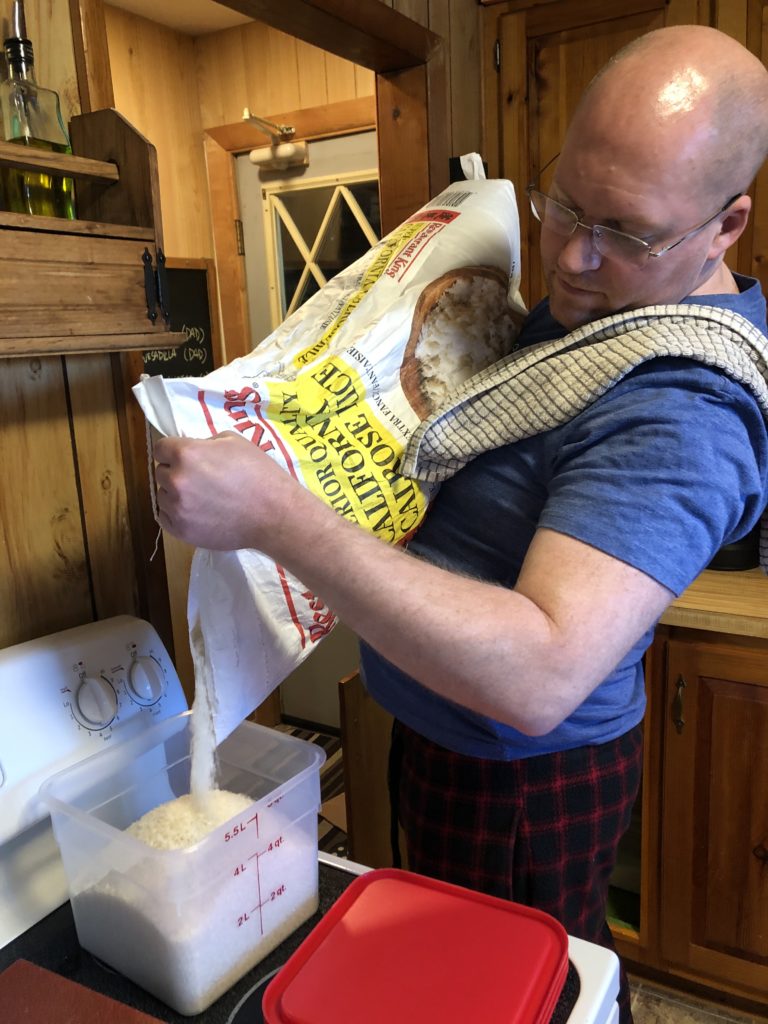
I do most of our shopping at a restaurant supply store. This means I shop in bulk. Buying in bulk presents some of its own challenges. Condiments fall into this category-we buy ranch dressing, mayonnaise, kalamata olives, green olives, jalapenos, and banana peppers in gallon containers- but you have to be able to store them in the fridge once opened. We use our 2nd fridge primarily for these containers as well as large containers of homemade yogurt, sour cream, and ricotta and our monthly store of eggsa. But again… you have to be able to store gallons of these items at a time, use them before they expire and not be overwhelmed by the process.
If you have made it this far and you are thinking- “Wow that seems like a lot?!” You’re right! It is. It has taken us the better part of a decade (and four growing kids) to get to where we are with food planning and logistics.
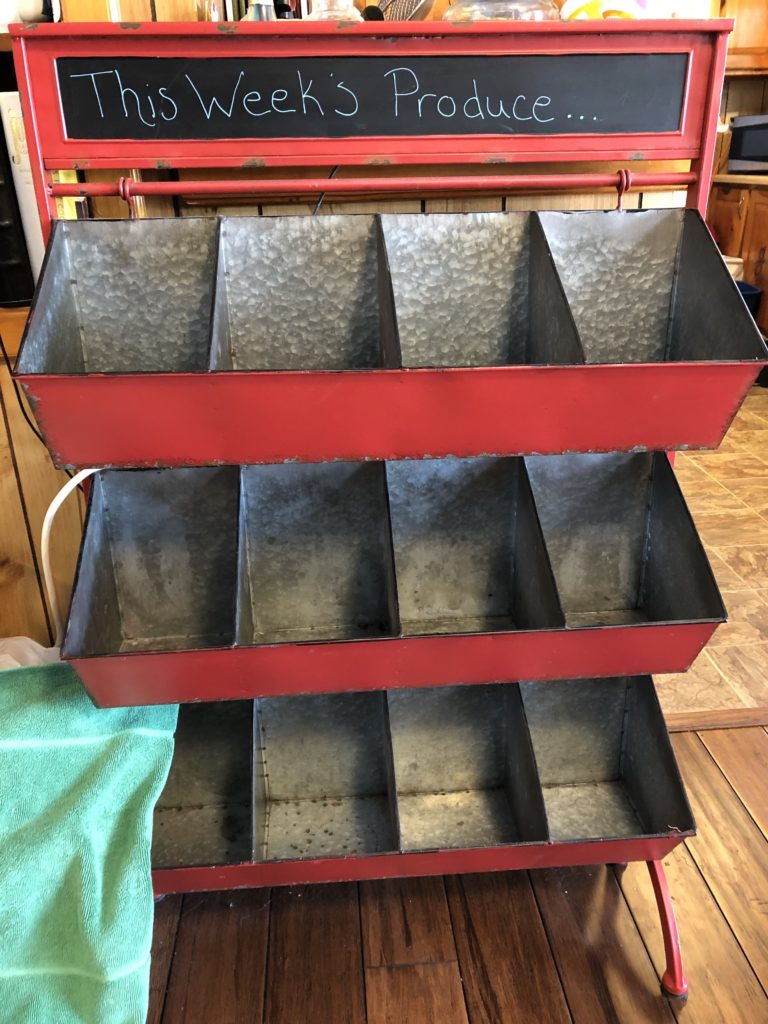
Going into shopping day I feel like ‘Old Mother Hubbard’ – our cupboards are bare–okay not really bare, but we are certainly low on many ingredients. In an effort to reduce waste we try to use up our stores regularly. Kevin is AMAZING (I could stop the sentence there but I have something I’m trying to say here) at making meals out of the random leftover ingredients. And I’m pretty good at not buying items we won’t actually use. But if a jar sits in the cupboard for more than about 6 weeks, Kevin gets antsy and adds it to his version of ‘Chef’s Choice’.
A typical haul looks like this:
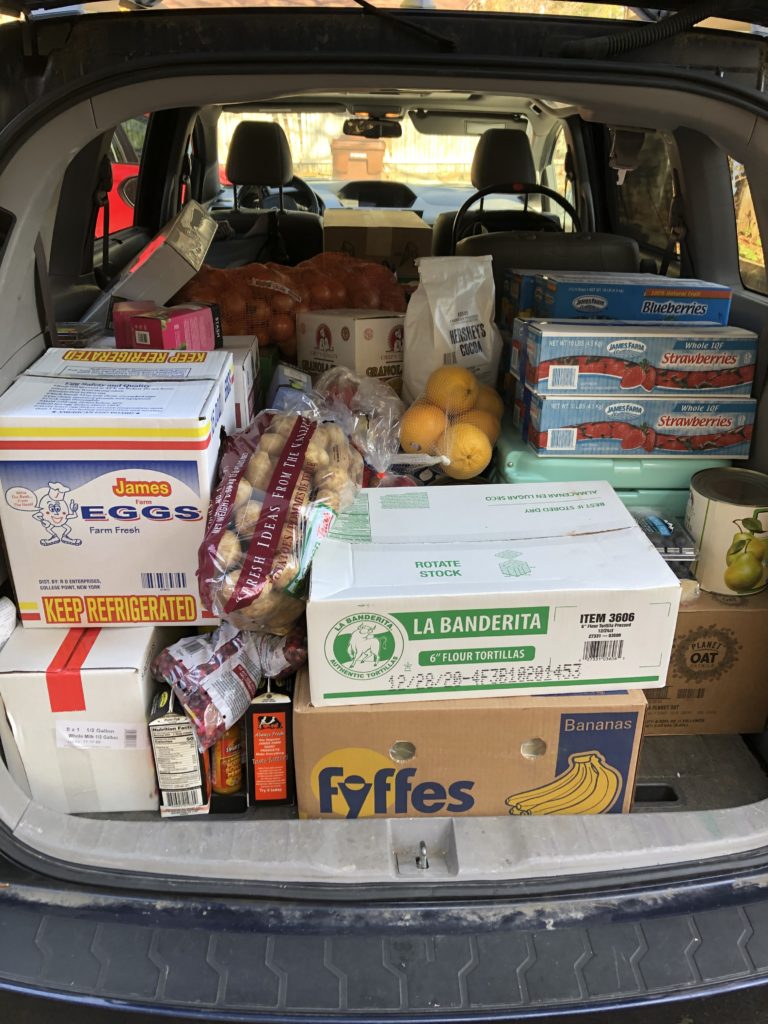
Here’s a basic rundown of what I buy on a typical shopping trip:
Fridge/Freezer
10 lbs frozen strawberries
10 lbs frozen blueberries
10 lbs frozen peaches
10 lbs frozen raspberries
10 lbs frozen tortellini
20 lbs shredded mozzarella cheese
20 lbs shredded cheddar cheese
5 lbs of brick cheddar
5 lbs of American cheese
30 dozen eggs
3 gallons of oat milk
15 gallons of milk
4 qts of heavy cream
5 lbs of sour cream
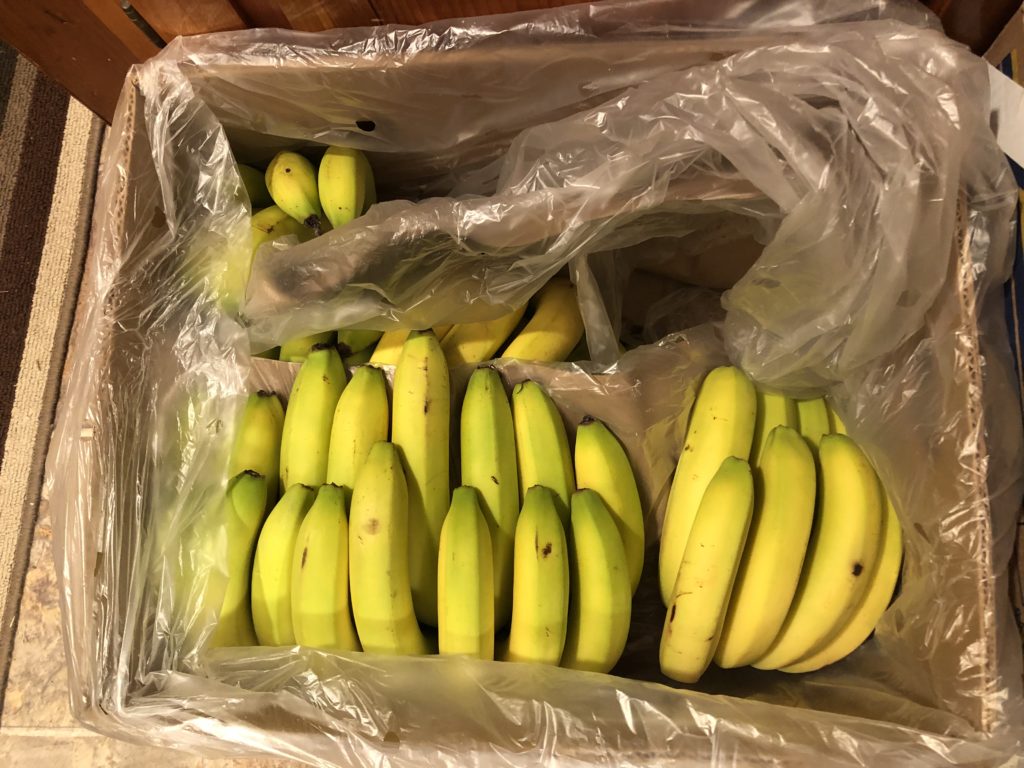
Produce:
40 lbs of bananas
40 ct of potatoes- they are rather large
10 lbs of sweet potatoes
6 heads of lettuce
5 lbs of carrots
6 lbs of clementines
7 mangoes
1 flat of strawberries
2 qts blueberries
10 lbs of pears
25 lbs of apples
4 heads of cabbage
4 heads of broccoli
10 lbs of onions
1 case of tomatoes- variety depends on the season
10 bell peppers
10 cucumbers
5 winter squash
3 heads of celery
*Additional veggies seasonally- asparagus, Brussels sprouts, green beans, radishes, sweet corn etc.

Dry Goods: – It is worth noting that shelf stable items last longer and therefore get purchased on a rolling basis rather than monthly so for these purposes this is what I bought THIS month.
8 bags of tortilla chips
1 jar of melba sauce
6 boxes of crackers
1 case of salt
5 liters of olive oil
50 lbs of popcorn kernels
4 lbs of smooth peanut butter
4 lbs of crunchy peanut butter
1 lb of yeast
48 oz of dried cranberries
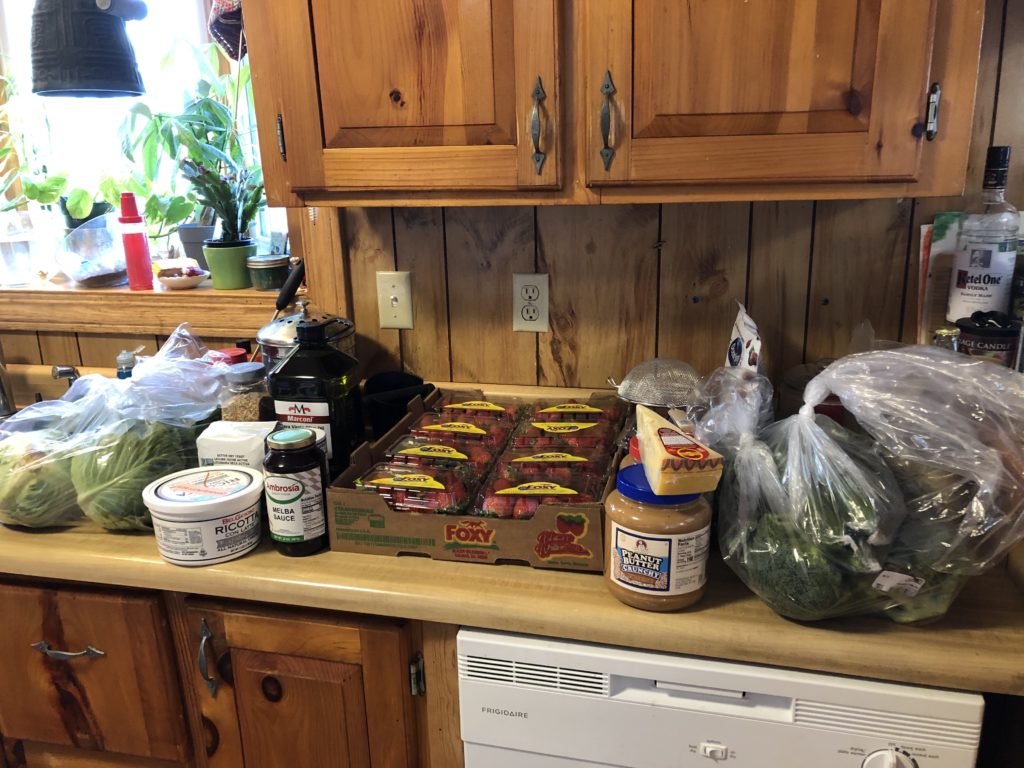
These items get purchased every other or every third month depending:
36 lbs of butter
100 – 12″ tortilla shells
300 – 6″ tortilla shells
12 – 8oz packages of cream cheese
24 lbs of frozen broccoli
36 lbs of frozen spinach/kale
1/8 wheel of Parmesan Cheese
20 lbs of edamame
24 cans of black beans
24 cans of cannelloni beans
24 cans garbanzo beans
24 cans sweetened condensed milk
24 cans evaporated milk
12 can diced tomatoes
10# can of black olives
4 -1 gal jars jalapanos
4-1 gal jars kalamata olives
1 gal jar of banana peppers
1 gal tub of mayonnaise
1 gal tub of mustard
7 lbs jar of ketchup
5 lbs of various/rotating nuts
50 lbs whole wheat flour
50 lbs of bread flour
20# brown rice
50# sugar
50# sushi rice
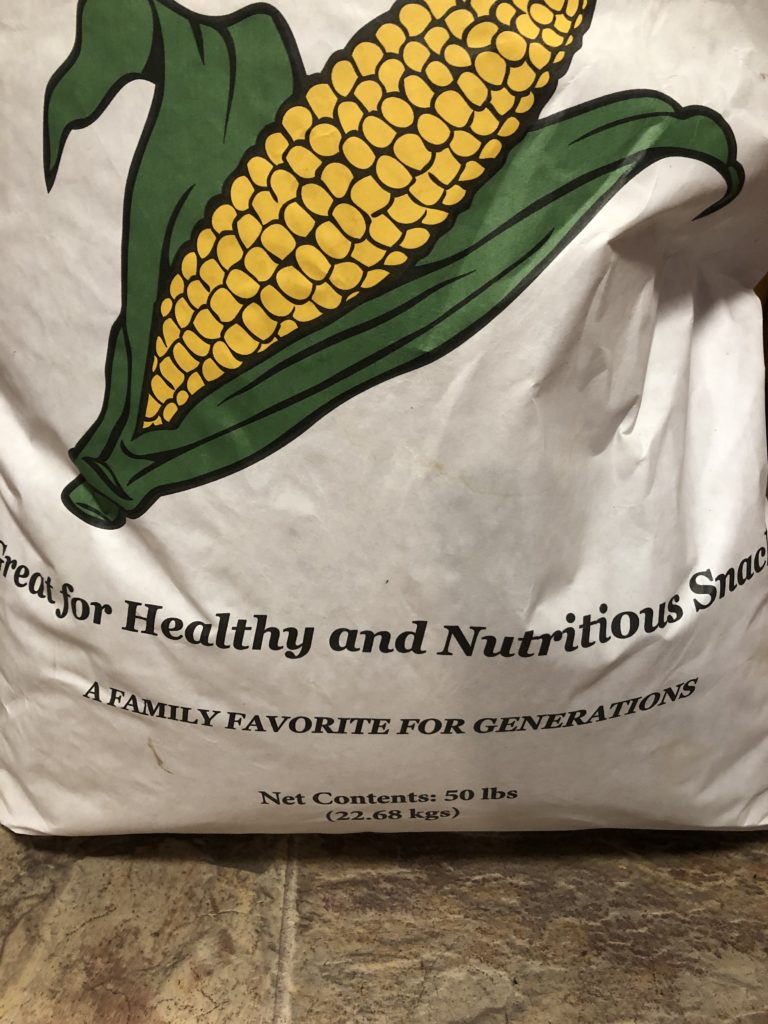
Other baking items get purchased on a more annual basis:
10# baking soda
10# corn starch
10# baking powder
1 gal soy sauce
4 pack of Sriracha
64 oz lemon juice
6-32 oz chopped garlic
spices/seasonings
These lists are clearly not exhaustive, but it is a pretty good summary of how we get from one month to the next, meal planning weekly, shopping monthly, and still trying to eat well balanced home cooked meals. We currently have a monthly food expenditure average of about $600.00. But there was clearly some higher upfront costs to get us to that average. And about $100.00 of that is milk from a local dairy and non-food items (toothpaste, shampoo, etc.).
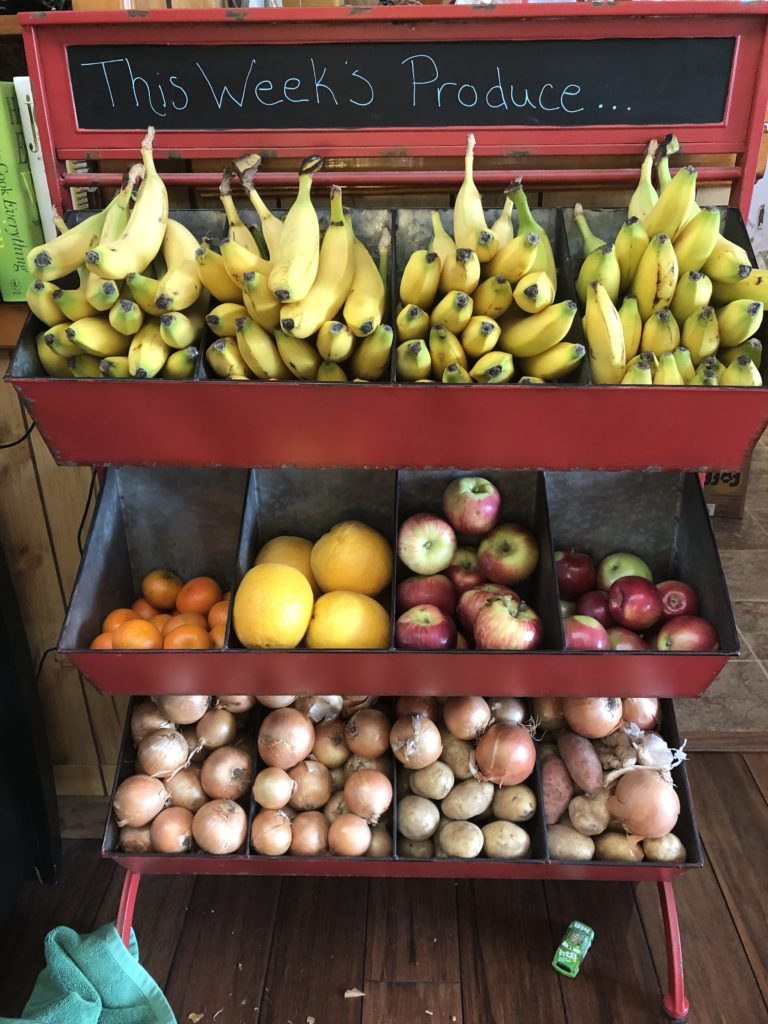
Lastly, Kevin and I both really enjoy entertaining. We like being the hosts. We like cooking and baking and sharing our food with friends and family. We are doing everything we can to contribute to a return to normalcy so we can throw open the doors and feed you all. So, if you find yourself in the neighborhood please stop by. There is always room at our table.

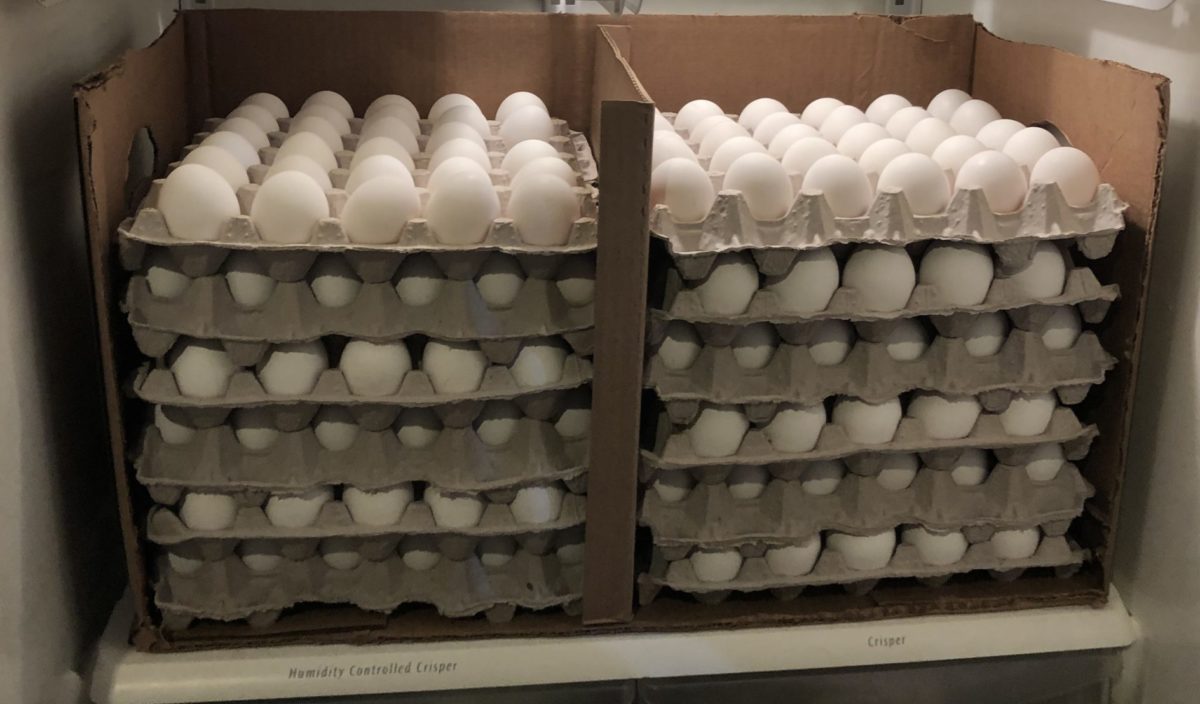
Leave a Reply
You must be logged in to post a comment.